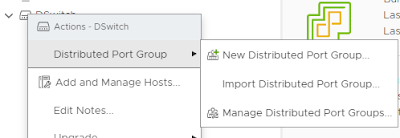UAG Commander
Introducing a new way to manage the deployments of your VMware UAG's
With UAG Commander, you can consistently deploy UAG's with the already existing powershell script.
No more guessing on the correct syntax, order / location of the correct settings, or remembering what settings you used previously.
UAG commander currently has the following features:
Gui for Automatic creation of properly formatted INI files
Automatic backup of INI files before deployment (up to five backups are auto rotated)
Deployment through existing powershell scripts
Importation of existing INI files
Auto enumeration of datastores, networks, and hosts
Check the
download page for the latest version and updates
Requirements
VMware OVF tool
vSphere 6.5 (the application calls 6.5's rest api to get the correct values)
UAG powershell scripts from VMware
.Net 4.6 or later
installation is straightforward run the installer (if you do not have OVFTool already installed a warning message will popup and the installer will exit)
Once the install has completed you will be able to fine it in the start menu:
The application will open an you will be presented with a blank template, click NEW to start a new UAG deployment
A new folder will be created for the new UAG you typed in under C:\programdata\UAGCommander (unless you have programdata redirected somewhere else it should always be on C:\) You will need to copy uagdeploy.ps1 and uagdeploy.psm1 from the VMware powershell site into the root of the UAGCommander folder as show below:
Finish filling out the fields, if using vsphere 6.5 or later you can have the Datastores, Clusters, and Networks pulled directly into the application:
Once you click deploy you will be prompted to save and depoly, select yes, if you select NO changes are not saved, and UAG is not deployed. Clicking Yes will give you the typical Powershell deployment script prompts for passwords for root, admin, joining CEP, certificate password, and vcenter user password.
***NOTE UAGCommander does not save any passwords any where at this time so you will always be prompted for passwords.
LOGS:
The UAG commander application logs verbose logs in the root of the ProgramData\UAGCommander folder
When deploying through the powershell script, the powershell creates its own logs in the folder of the UAG log-
.txt
Backups:
The default ini is call uag.ini, each UAG has its own in the root of the
folder.
When ever the Save or Deploy button (and then save) is pressed, the uag.ini is backed up to backup# and a new uag.ini is written. This is done up to 5 times in case you need to use a previous version.
If you have any questions or Feedback please let me know, and I will try to address them as they come in.














Comments
Post a Comment